For the second time in an hour, my usually-reliable sense of direction let me down. The alleyways around Sishu Old Street (喜樹老街) were proving every bit as confounding as those in Sikunshen (四鯤鯓), where I’d started the day’s wanderings.
I was in the southwestern corner of Tainan, a few hundred meters from the Taiwan Strait, looking around neighborhoods that feel remote, but which have been part of the city since the boundary between Tainan City and Tainan County was drawn in 1946.
Inspiration to explore this part of Tainan had come in the form of a religious building, specifically its name. Longshan Temple (龍山寺) in Lukang (鹿港) is the country’s most sublime place of worship. Mengjia Longshan Temple (艋舺龍山寺) may well be Taipei’s busiest shrine, while Longshan Temple in Kaohsiung’s Fengshan (鳳山) District has 301 years of history. So when I noticed that Sikunshen has its own Longshan Temple, my mind was made up.
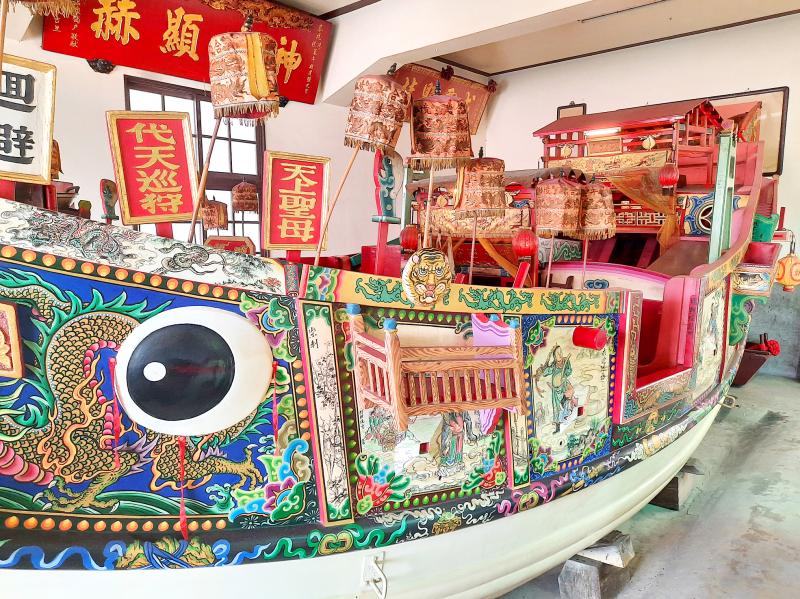
Photo: Steven Crook
TEMPLE ART
I knew I shouldn’t expect too much, simply because the shrine shares a name with some of Taiwan’s most glorious religious edifices. Yet Sikunshen Longshan Temple, it turned out, has both historic and of artistic significance.
The bilingual leaflet I picked up on arrival told me that it was established in 1665 by early Han settlers who worshipped Master Qingshui (清水祖師). If this is correct, it’s the oldest shrine in Taiwan devoted to Qingshui, a Buddhist monk in 11th-century Fujian revered for his skill as a physician and a rainmaker.
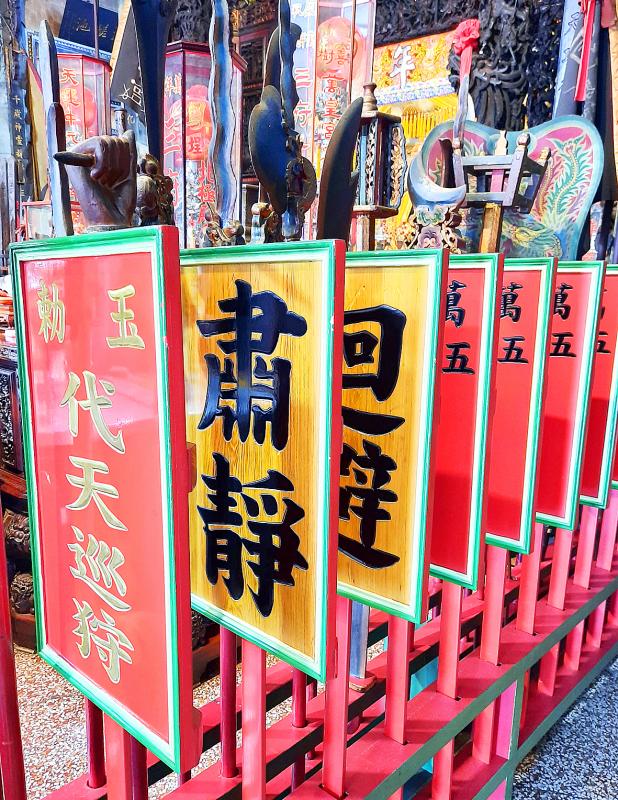
Photo: Steven Crook
The temple’s current door gods were painted by Pan Yuei-hsiung (潘岳雄). A previous set of door gods — painted by Pan’s late father, the renowned artist Pan Li-shui (潘麗水) — are preserved in an upstairs gallery. Unfortunately, the room is so badly lit that I couldn’t properly appreciate the elder Pan’s work.
Following a bilingual sign, I then visited the 300-year-old Longmu Well North (目井分頂頭) on Alley 47, Lane 194, Kunshen Road (鯤鯓路). Until 1968, when the neighborhood was connected to the municipal water supply, Sikunshen residents depended on this well and its sister, Longmu Well South (龍目井下頭).
The distance from one well to the other is less than 150m, but I had no luck finding Longmu Well South. The sidestreets seemed to form concentric semicircles. Only when I emerged onto the straight road that approaches Anping Port (安平商港) did I get my bearings.
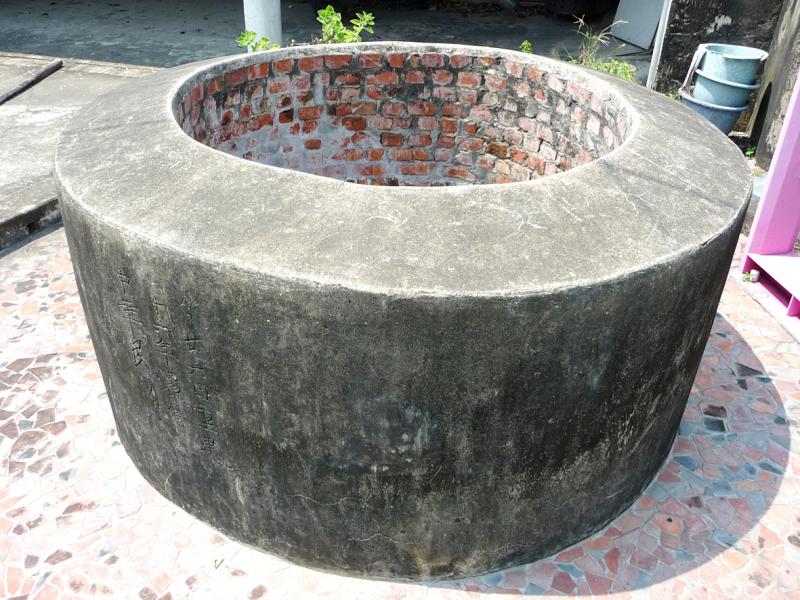
Photo: Steven Crook
Riding south away from the port, within five minutes I reached Sishu (喜樹), situated between Provincial Highways 17 and 17A (17甲). The “official” Old Street is Lane 254, Sishu Road (喜樹路), but venturing down Lane 302 or Lane 340 is even better if picturesque scenes of dilapidation braise your pork chop.
I moved around slowly, because it wasn’t always obvious what was an alleyway for public use, and what was simply a gap between houses. As I got lost, I couldn’t help but think: If these tiny redbrick dwellings were in Lukang (鹿港) or Anping (安平), market forces and/or government funding would have resulted in at least a few renovation efforts.
Some of the ruins have been labeled. The roof beams of the Old Zheng Family House (鄭家古厝) have rotted to the thickness of walking sticks. Judging by what remains of the facade, at some point in the 20th century its owners were among the area’s wealthier residents. The compound which includes the Xin Family’s Old Well (辛家古井) is in better condition, but it appears to be uninhabited.

Photo: Steven Crook
I’ve mixed feelings about the murals that have been painted on several of Sishu’s walls. Colorful nostalgia makes for good photos, yet in none of Taiwan’s old streets or old neighborhoods have I seen a house realistically restored to show how people actually lived in the past. How did they cope with stifling heat in summer, winter’s cold draughts, bugs and vermin, not to mention the absence of running water and electricity?
BLESSING THE BEAMER
Wanli Wannian Temple (灣裡萬年殿), 1km south of Sishu Old Street, has become popular in recent decades as a place where owners of new cars get their vehicles blessed.
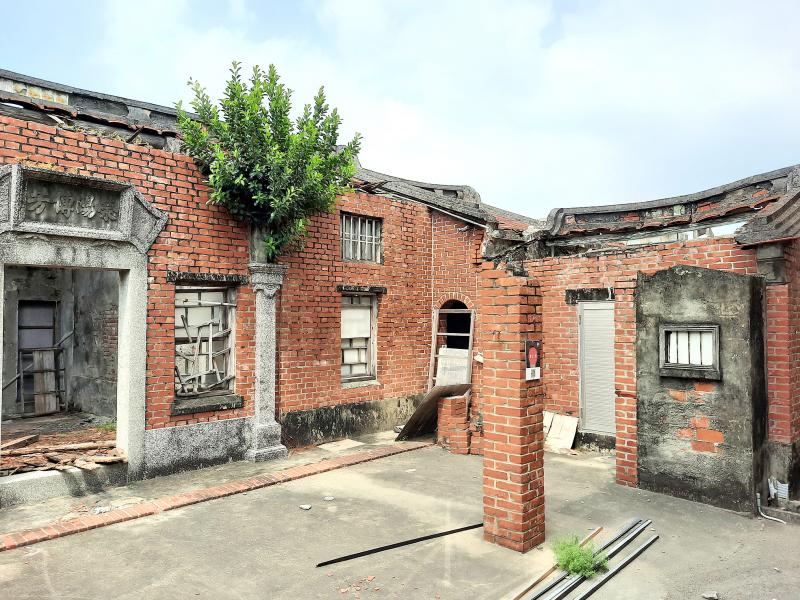
Photo: Steven Crook
Just as I arrived, a BMW SUV pulled out from the forecourt, trailing a long string of firecrackers. It crept a short distance down the street while the pyrotechnics detonated. When the car stopped, the driver brushed firecracker debris from the back of his automobile before untying the string. He then climbed back in without looking at the trash and scorch marks he’d left on the road. But I’m sure he’d made a generous donation to the temple.
Wannian Temple, which is at 64 Wanli Road (灣裡路), was founded in 1729 to enshrine three Wang Ye (王爺) spirits: Zhu, Lord of a Thousand Years (朱府千歲); Li, Lord of a Thousand Years (李府千歲); and Ye, Lord of a Thousand Years (葉府千歲).
The original effigies of this trio arrived on an unmanned boat which was likely set adrift from the coast of China’s Fujian Province during a plague-expulsion ritual. Realizing what this boat signified, those who found it stranded on the beach near Wanli surely reacted with awe and fear, regarding it literally as “a gift from the gods.”
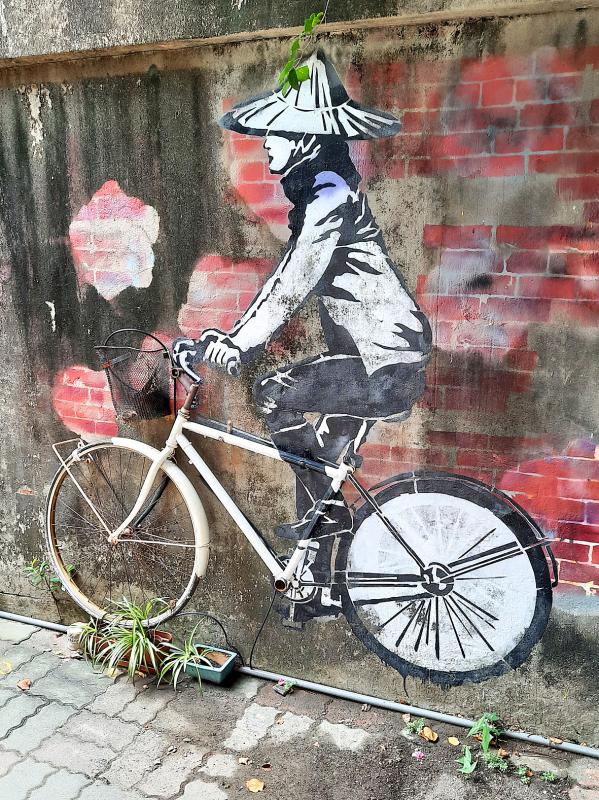
Photo: Steven Crook
The people of Sishu thought the boat and effigies should be theirs. The residents of Wanli argued they were entitled to take possession. Eventually, a compromise was reached. The icons ended up in Sishu’s Wanhuang Temple (萬皇宮) on Lane 222, Sishu Road. Wannian Temple was established to preserve and propitiate the boat.
There are now two boats. The vessel housed in the temple’s south wing replaced the original, while the one in the north wing was built to mark the temple’s affiliation with Nankunshen Daitian Temple (南鯤鯓代天府) in Tainan’s Beimen District. Both are about 7m in length.
So Wannian Temple’s resident deities could inspect their earthly domain, the latter vessel used to be sailed along the Erren River (二仁溪). If you saw my article “A river in recovery” (July 24 Taipei Times, page 13), you may guess why the temple’s management committee scrapped this practice, and why there’s a chance it could be revived in the future. Industrialization left the Erren River horrifically polluted, but it’s now significantly cleaner. The gods may yet resume their waterborne patrols.
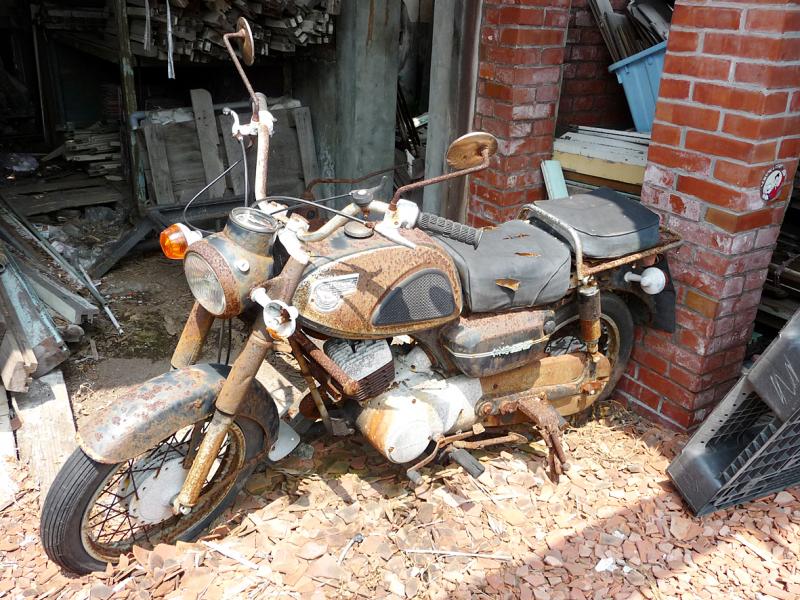
Photo: Steven Crook
Steven Crook has been writing about travel, culture and business in Taiwan since 1996. He is the author of Taiwan: The Bradt Travel Guide and co-author of A Culinary History of Taipei: Beyond Pork and Ponlai.
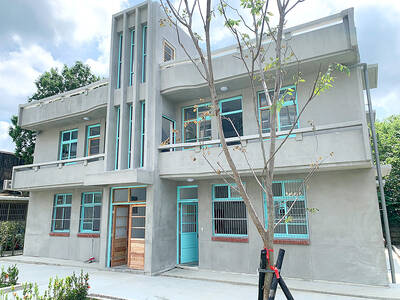
June 2 to June 8 Taiwan’s woodcutters believe that if they see even one speck of red in their cooked rice, no matter how small, an accident is going to happen. Peng Chin-tian (彭錦田) swears that this has proven to be true at every stop during his decades-long career in the logging industry. Along with mining, timber harvesting was once considered the most dangerous profession in Taiwan. Not only were mishaps common during all stages of processing, it was difficult to transport the injured to get medical treatment. Many died during the arduous journey. Peng recounts some of his accidents in
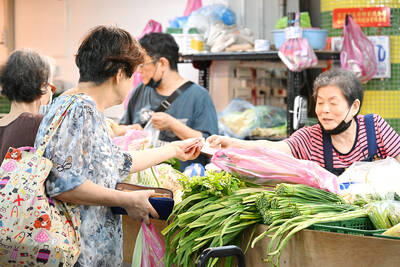
“Why does Taiwan identity decline?”a group of researchers lead by University of Nevada political scientist Austin Wang (王宏恩) asked in a recent paper. After all, it is not difficult to explain the rise in Taiwanese identity after the early 1990s. But no model predicted its decline during the 2016-2018 period, they say. After testing various alternative explanations, Wang et al argue that the fall-off in Taiwanese identity during that period is related to voter hedging based on the performance of the Democratic Progressive Party (DPP). Since the DPP is perceived as the guardian of Taiwan identity, when it performs well,

A short walk beneath the dense Amazon canopy, the forest abruptly opens up. Fallen logs are rotting, the trees grow sparser and the temperature rises in places sunlight hits the ground. This is what 24 years of severe drought looks like in the world’s largest rainforest. But this patch of degraded forest, about the size of a soccer field, is a scientific experiment. Launched in 2000 by Brazilian and British scientists, Esecaflor — short for “Forest Drought Study Project” in Portuguese — set out to simulate a future in which the changing climate could deplete the Amazon of rainfall. It is
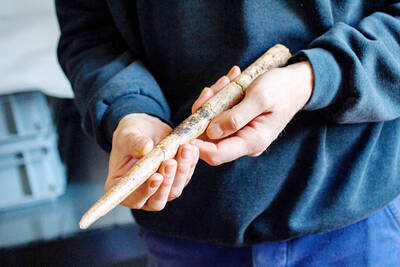
Artifacts found at archeological sites in France and Spain along the Bay of Biscay shoreline show that humans have been crafting tools from whale bones since more than 20,000 years ago, illustrating anew the resourcefulness of prehistoric people. The tools, primarily hunting implements such as projectile points, were fashioned from the bones of at least five species of large whales, the researchers said. Bones from sperm whales were the most abundant, followed by fin whales, gray whales, right or bowhead whales — two species indistinguishable with the analytical method used in the study — and blue whales. With seafaring capabilities by humans